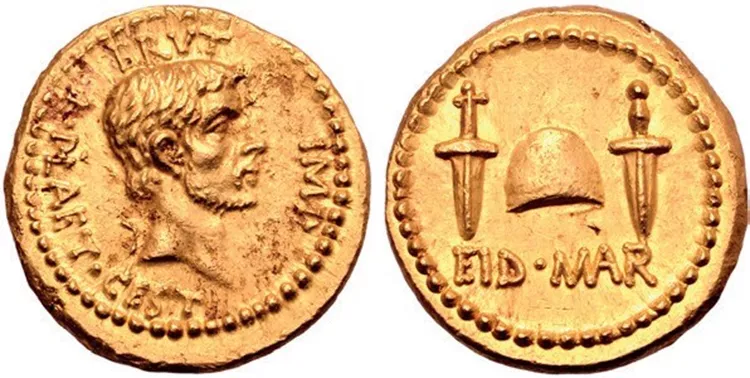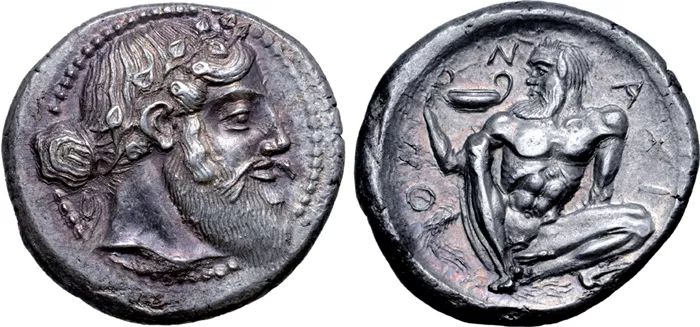
The Brutus Eid Mar-type gold aureus which took £2.7m at Roma Auctions in London on October 29, 2020.
Appearing before the New York Supreme Criminal Court last month, Beale admitted two counts of conspiracy and three counts of criminal possession of stolen property.
Among the charges he faced was falsifying the provenance of the rare Brutus Eid Mar-type gold aureus, struck shortly after the murder of Julius Caesar, that sold for £2.7m in London in October 2020 – an auction record for any classical coin at the time. The buyer paid more than five times the top estimate and around £3.25m with the 20% premium added.
Beale was also accused of falsifying the provenance a silver tetradrachm struck in c.460BC in commemoration of the refounding of the city of Naxos that sold in the same sale for £240,000. Both coins were seized by US authorities and repatriated earlier this year to Greece and Italy, their countries of origin.

The silver tetradrachm struck in c.460 BC in commemoration of the refounding of the city of Naxos that sold for £240,000 at Roma Auctions in London on October 29, 2020.
According to court documents, Beale entered into an agreement in 2015 to acquire the Eid Mar aureus. It was alleged that, along with coin dealer and Roma Numismatics consultant Italo Vecchi, he travelled to Munich and paid €450,000 in cash for the coin, despite it having no paperwork or any other form of documentation relating to its provenance.
According to a report by the US Homeland Security Investigations, it was then offered for sale by private treaty at the 2015 edition of the New York International Numismatics Convention to an unnamed party. Beale had said the coin was from ‘an old Swiss collection’ but no deal was agreed.
In August 2020, Beale shipped the coin to the US to be authenticated, listing its country of origin as ‘Turkey’ in order to make it less likely to be seized by US Customs for checks compared to ancient items from Italy or Greece.
The US Homeland Security report further alleged that an informant said they had been approached by Vecchi and Beale with an offer to sign fabricated provenance papers in return for €100,000. The informant had refused the offer.
When the auction catalogue for the October 2020 sale was published, the Eid Mar coin was listed as being previously owned by Bernard de Chambrier (1878- 1963) and the antiquarian Baron Gustave Charles Ferdinand von Bonstetten (1816-92), whose collection formed the basis of the Bernisches Historisches Museum.
Judge Althea Drysdale called Beale’s actions “woefully wrong and illegal”, as well as “harmful to both the buyers and the nations whose cultural property [was] illegally acquired”.
Beale also admitted to falsifying the provenance of a number of silver Alexander the Great decadrachms which were sold by Roma Numismatics. Court documents show that they were offered with their origins from the ‘Gaza Hoard’ disguised.
The hoard of coins dating back to the 4th century BC was discovered by fishermen in the Palestinian territory early this century but their archaeological context is unknown.
Previously only 20 Alexander decadrachms were known. Eleven of these high denomination coins were sold at Roma Numismatics, including one that made £100,000 in September 2017.
Following his guilty plea, Beale faces a maximum sentence of 25 years, although this is likely to be reduced. He is next due to appear before the New York Supreme Criminal Court in March.
Vecchi has pleaded not guilty to the charges against him.
Roma Numismatics was founded in 2008 and, according to the latest data published by ATG earlier this year, became the highestgrossing auction house for coin sales in the UK with total sales of over £16m hammer in 2022.










